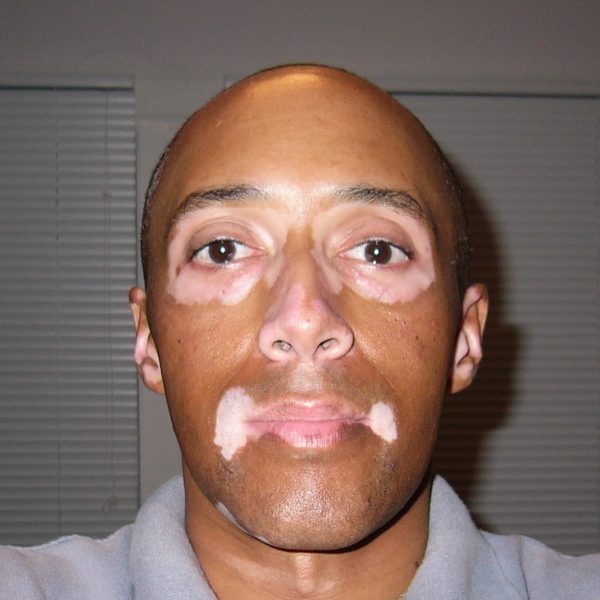Understanding Vitiligo: Causes, Symptoms, and Treatment with Phototherapy

Vitiligo is a chronic skin condition that causes the loss of pigmentation in patches of skin. It occurs when melanocytes—the cells responsible for producing skin pigment (melanin)—are destroyed or stop functioning.
As a result, white or depigmented patches appear on various parts of the body. When vitiligo affects hair-bearing areas, the hair in those areas may also turn white or gray.
Vitiligo is not contagious, and while it isn’t physically painful or medically dangerous, it can have a significant emotional and social impact due to the visible changes in appearance.
What Causes Vitiligo?
The exact cause of vitiligo is not fully understood, but it’s believed to be related to an autoimmune response. There are two primary theories:
- Autoimmune Theory: The body’s immune system mistakenly attacks and destroys melanocytes.
- Self-Destruction Theory: Melanocytes may become defective and destroy themselves.
Vitiligo often runs in families, indicating a genetic component. Triggers that may contribute to the onset or progression of vitiligo include:
- Severe sunburns
- Skin trauma or irritation
- Emotional or physical stress
Who Is Affected by Vitiligo?
Vitiligo affects approximately 1–2% of the global population, regardless of gender or race. While it can develop at any age, 50% of cases begin between ages 10 and 30, and 95% occur before the age of 40. Reference: https://www.mdpi.com/2079-9284/10/3/84
How to Protect Skin Affected by Vitiligo
Because the depigmented skin lacks melanin, it is more vulnerable to sunburn. Patients with vitiligo should take special care to:
- Use broad-spectrum sunscreen (SPF 30 or higher)
- Wear protective clothing such as long sleeves, pants, and wide-brimmed hats
- Limit sun exposure during peak hours
These steps help prevent further skin damage and reduce the contrast between affected and unaffected skin.
Is There a Cure for Vitiligo?
There is currently no cure for vitiligo, but several treatment options are available to help restore skin color or slow the progression of depigmentation. While results vary, some therapies can lead to noticeable repigmentation over time.
How Phototherapy Can Help Treat Vitiligo
Phototherapy—also known as light therapy—is a clinically proven, non-invasive treatment for vitiligo. It uses specific wavelengths of ultraviolet (UV) light to stimulate melanocyte activity and encourage repigmentation of the skin.
At Phothera, we specialize in advanced phototherapy solutions for conditions like vitiligo, psoriasis, and eczema. Our devices deliver targeted, consistent UV light to affected areas, which can help reduce visible symptoms and improve skin tone.
Types of Phototherapy for Vitiligo
Treatment plans are typically customized by dermatologists based on the extent and location of depigmented skin. Common vitiligo phototherapy options include:
- Narrowband UVB (NB-UVB): The gold standard for vitiligo treatment; encourages repigmentation with fewer side effects than older UV therapies.
- Broadband UVB and UVA Combinations: Sometimes used in combination to improve results.
- Psoralen Plus UVA (PUVA): Involves applying or ingesting a light-sensitizing medication (psoralen) before UVA exposure.
- Targeted Phototherapy Devices: Ideal for localized patches, especially on the face, hands, and feet.
Phothera offers a range of home-use and clinical phototherapy devices, including handheld units, panel systems, and full-body cabinets to support personalized treatment plans.
Before

After

Start Your Journey Toward Clearer Skin
If you or your patients are seeking effective, non-invasive vitiligo treatment, talk to your dermatologist about phototherapy. Phothera’s innovative devices are designed to deliver safe, efficient UV light therapy for home or clinic use.
Learn More About Vitiligo and Phototherapy
For additional resources and support, visit these organizations:
For more information about Phothera’s phototherapy devices or to request a consultation, contact us today.
References
Zanolli MD, Feldman SR. Phototherapy Treatment Protocols for Psoriasis and Other Phototherapy Responsive Dermatoses. London: Taylor & Francis; 2005.
What is Vitiligo? Vitiligo Support International. https://vitiligosupport.org/what-is-vitiligo/. Published 2005.
